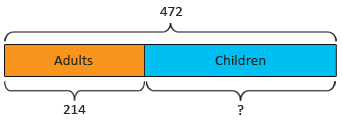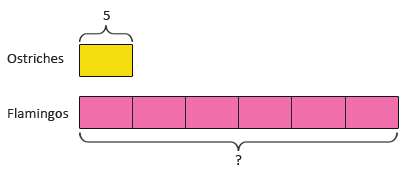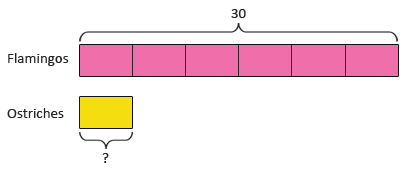What is Singapore Math?
Singapore Maths is a way of learning and mastering essential mathematical skills and concepts at the elementary (primary) and middle school (secondary) levels with a strong emphasis on problem solving.
A distinguishing feature of the Singapore primary mathematics curriculum is the use of the Model Method for problem solving. The Model Method or Bar Model Method, in use since the 1980s, is a child-friendly pictorial language used to develop students' understanding of fundamental mathematics concepts and proficiency in solving basic math word problems.
Historically, students have always had difficulty with problem sums in the early years of primary school. To address this issue, the Ministry of Education (MOE), the central education authority in Singapore, advocated the Concrete-Pictorial-Abstract approach. This approach makes use of everyday experiences, learning aids and pictorial representations to help students understand abstract concepts.

214 + 258 = 472
472 people visited the zoo last Thursday.

472 − 214 = 258
There were 258 children.

| 1 unit |  | 5 |
| 6 units |  | 6 × 5 |
| = | 30 |

| 6 units |  | 30 |
| 1 unit |  | 30 ÷ 6 |
| = | 5 |
Singapore Maths at Home Campus
The way the subject is taught in Singapore provides a strong foundation for the learning of mathematics from the primary to secondary levels and beyond.
At Home Campus, we believe that everybody can be good at mathematics, as has been proved in Singapore. As such, we follow the latest curriculum set by MOE in all the modules at Home Campus - Learn, Practice and Worksheets.
Videos and notes in the Learn module of Home Campus extensively use pictorial models like bar models, number bonds, place value charts, etc. to explain each concept. Explanations are mostly just a few words in highlighted boxes making it easy to read and understand the concept.
The Practice and Worksheets modules heavily use everyday real-life examples in problems with solutions explained either pictorially or in a few easy-to-follow steps.
These visuals provide students with a simple yet powerful tool to represent quantities and their relationships given in a problem and then work out strategies to solve the problem. Students learn when to add, subtract, multiply or divide, relying on the meaning of the problem situation rather than relying on clue-words or memorizing rules. Models are also a useful aid to help students understand the concepts of fractions, percentages and ratio.
The various tools at Home Campus allow students to master basic math skills at a more rapid pace. Students begin solving simple multi-step word problems in third grade, using models. Later grades apply this same method to more and more difficult problems. By the end of the sixth grade, students have mastered complex topics and are comfortable doing difficult multi-step word problems that are traditionally solved using Algebra.
As the Singapore maths curriculum becomes popular, more and more educators worldwide recognize its benefits. Home Campus is here to support students and educators adopt the Singapore way of learning and teaching math.